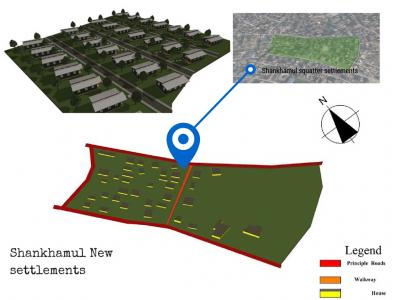| |
Addressing Poverty, Improving Safety of The Urban Poor: A Shelter Programme in Nepal
Kathmandu, Nepal
Carlene Jones
Mark Codling
Jared Noynaert
Hoang Huu Chung
Civil and Environmental Engineering, Auckland, New Zealand
Dr Alice Yan Chang-Richards
Full Document (PDF)
Abstract
A geographically isolated mountain nation, Nepal is classified by the World Bank as “one of the poorest countries in the world” and characterised by extreme vulnerability to natural hazards (11th-highest earthquake and 30th-highest flood risk) (World Bank, 2015).Kathmandu Valley, with its sprawling slums and multi-hazard exposure, desperately needs economic stimulation and resilient housing (World Bank, 2015). Local production of base isolators to support a housing programme could provide both. Earthquake resistant housing, using a simplified base isolator design, could fill a massive resilience gap. Seismic reliability, simplicity of construction, and low-cost materials are key design drivers. With government and community support, a small manufacturing centre for base isolators could be established within eight months, providing employment and putting rampant waste (especially rubber) to use. New homes for at-risk populations, especially slum residents, would be paired with a phased replacement of legacy structures, prioritised by seismic vulnerability and demonstrated financial need. The outcomes of this programme will be:
(1) reduced unemployment and local economic stimulation,
(2) reduced waste and material pollution,
(3) reduced physical vulnerability to seismic and flood hazards,
(4) improved quality of life for local populations, and
(5) establishment of a precedent for similar housing transformations in rural Nepal or other developing countries.
|
| |

image of the settlement (architectural scale or example of unit)

image of the settlement (urban scale or group of housing units)

diagram of the actors involved and the relationships between them
|
|



